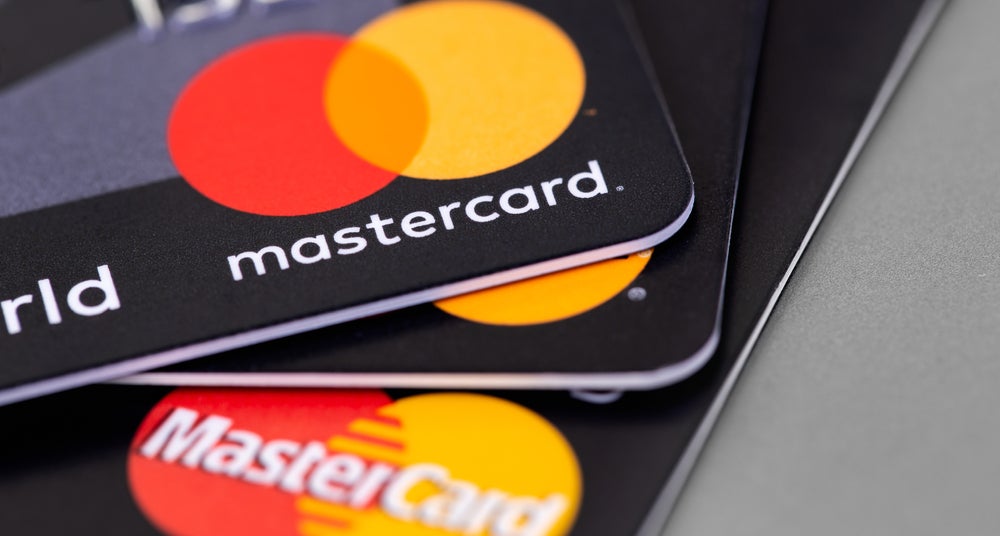While the UK remains one of the largest and most mature payment markets, it still needs to keep up with innovation and new technology. Luckily, it has the contactless boom, particularly in travel, and the release of mobile payment options to keep it up to speed
The UK is Europe’s largest and most highly competitive industry for payment cards. It accounted for 19.5% of Europe’s total transaction value in 2014, and 20.1% of its transaction volume. The UK payment cards market is mature, with a high penetration of credit and debit cards. Following the financial crisis, banks and card issuers were forced to introduce bespoke product and service offerings in order to retain their market share.
Credit transfer accounts for most of the UK payments in terms of transaction value, and was used for both high-value corporate and low-value retail transactions. In the UK, salaries are generally paid through credit transfers. Paper-based credit transfers usually take three days to clear, and are generally initiated by small companies or consumers.
Direct debits are used for low-value recurring payments such as utility bills, and accounted for the second-largest share of transaction value in 2014. In the UK, preauthorised direct debit options are the most common form of direct debit, and take three days to be processed. Direct debits can be set up via post, telephone or online.
Cheques are gradually disappearing for consumer payments, primarily due consumer preference for electronic payments, and the withdrawal of the cheque guarantee card scheme by the government in 2011. The government is working towards the reduced use of cheques in financial transactions. In this regard, 2018 has been selected as a target year for the abolition of cheques from the UK market by the Treasury Select Committee.
The use of payment cards increased between 2010 and 2014, although it still lags behind cash in terms of transaction value. A growing number of POS terminals, a preference for contactless payments, and an increase in the number of retailers accepting cards for payments contributed to the growth of payment card transaction volumes and values. The rising number of online shoppers and the growing retail sector are expected to increase the value of card-based transactions up to 2019.
How well do you really know your competitors?
Access the most comprehensive Company Profiles on the market, powered by GlobalData. Save hours of research. Gain competitive edge.

Thank you!
Your download email will arrive shortly
Not ready to buy yet? Download a free sample
We are confident about the unique quality of our Company Profiles. However, we want you to make the most beneficial decision for your business, so we offer a free sample that you can download by submitting the below form
By GlobalData
Cash continues to dominate the cards and payments industry in terms of transaction volume. One of the main reasons for its dominance is that consumers generally use cash for their day-to-day, low-value transactions.
According to the UK Payment Council, cash transactions represented just under half of all payments for the first time in 2014. The use of cash is anticipated to further decrease between 2015 and 2019, due to a growing preference for payment cards and the increase in payment transaction amounts via contactless cards from September 2015.
Banks and regulatory bodies are taking initiatives to encourage consumers to make payments using cards by offering a secured payment experience. All payment cards issued after January 2011 are EMV-compliant, offering enhanced security. The enhanced security and increased convenience of payment cards with technology such as EMV and contactless are anticipated to further drive card-based transactions over the next five years.
Consumers in the UK – especially the younger generation – are showing an inclination towards faster and more secure payment options. This has resulted in mobile operators, traditional and online retailers and other service providers introducing quick and efficient digital payment options between 2010 and 2014. However, payment cards are anticipated to continue their dominance as a preferred payment method, largely due to the familiarity of their use, availability of infrastructure and the emergence of technologies such as contactless cards.
The emergence of digital only banks is likely to accelerate a shift towards electronic payments in the UK. Atom Bank, which was granted a banking license by the Bank of England in June 2015, may become the country’s first digital only bank, allowing consumers to conduct banking transactions entirely online and via mobile phones. Other digital-only banks, such as the German-based Fidor Bank, Tandem Bank and Starling Bank, are also making their debut into the market.
The credit card market continues to record growth
The UK credit card market is mature, with a variety of product offerings available to consumers. Banks offer value-add services such as cashback, reward points and discounts on credit card purchases. Coupled with flexible repayment options, consumers in the UK have shown a preference for using credit cards for both in-store and online purchases, due to the value-added services.
With the UK’s economy recovering from the crisis and employment opportunities gradually growing from 2013 onwards, consumers have started to use credit cards more frequently at POS terminals, as they look to benefit from interest-free credit period and reward programmes. Consequently, the credit card transaction volume and values have increased in the last five years. The same trend is anticipated to continue between 2015 and 2019.
Banks in the UK are also offering a credit card balance transfer service. Balance transfers have become very competitive, as cardholders are unable to repay their credit card debt. To attract customers, banks are offering long duration low-rate transfer periods, while increasing the annual percentage rate (APR) on cards outside the repayment period.
In September 2014, Barclays Bank introduced a balance transfer card offering 0% interest for duration of up to 35 months. This model was followed by Lloyds Bank, who released a platinum credit card offering a 34 month balance transfer period.
Low-rate transfer periods have become an attractive proposition for banks and card issuers to increase their profitability on credit cards, as well as to retain their customer base. Balance transfers also encourage consumers to reduce the number of cards they own, as well as reduce their card debt.

Interchange fee regulation is anticipated to have a major impact on profitability of the UK payment cards market
The UK government implemented the EU rule on the interchange fee cap effective from December 9, 2015. Under these new rules, the interchange fee for credit and debit cards are capped at 0.3% and 0.2%, respectively. The regulation is anticipated to have a major impact on profitability of the UK’s payment cards market. With a reduction in revenue, issuers are likely to cut card offerings and benefits for consumers, and instead look at new ways to generate revenue. One way could be to increase fees levied on debit and credit cards.
Alternatively, high-street banks might put an end to free current accounts. The cap on interchange fees is expected to reduce card issuers’ revenue from consumer cards, but not commercial cards. Therefore, card issuers are likely to compensate for some of the lost revenue by issuing more commercial charge cards and credit cards.
Increasing adoption of contactless payments to increase scope of card payments
Contactless cards were first issued in the UK in 2003. The number of contactless cards is expected to reach 78 million by the end of 2015, equivalent to 42.5% of all UK payment cards. In line with the increase in the number of contactless cards, the number of contactless card transactions also increased. In September 2015 alone, 103.2 million contactless transactions were made in the country, including 89.7 million debit cards and 13.5 million credit and charge cards.
Since 2013, the UK payment cards market has seen the uptake of contactless technology. According to the UK Cards Association, the number of contactless card transactions increased from 1.7 million in 2010 to 319.2 million in 2014. The number of contactless card transactions rose by 220.5% year-on-year in September 2015. Major card issuers including Barclays, RBS, Lloyds Baking Group, HSBC, Nationwide, Santander and American Express have all issued contactless cards.
One of the key drivers of contactless payments has been its introduction to London’s public transport system. In 2014, there were 17 million contactless payments in bus journeys, and 14 million in rail trips. According to the UK Cards Association, this upward trend is expected to continue owing to an increase in the contactless spending limit. The growing popularity of mobile and wearable NFC payments is also anticipated to support its growth.
The ease of making quick payments using contactless cards has grown in popularity among both consumers and retailers in the UK. An increase in the number of retail outlets accepting contactless payments enabled consumers to opt for contactless card payments. To further encourage these payments, the UK Cards Association increased the spending limit from $31.50 (£20) to $47.90, effective from September 2015 onwards.
Growing e-commerce market offers growth prospects
The UK is Europe’s leading e-commerce market. E-commerce recorded a CAGR of 16.02%, from $90.4bn in 2010 to $170.1bn in 2014. The growth of the e-commerce was partly due to increasing online and mobile penetration, high consumer confidence in online transactions and the presence of secure online gateways.
One of the contributing factors in the growth of e-commerce in the UK over the last five years was an increased focus on customer retention tactics used by retailers, which included customised e-mails to consumers based on their buying patterns, display ads about products and services on their social networking pages based on their previous purchases, and on-site personalisation features offering them an enhanced shopping experience. These initiatives have led to a healthy relationship with customers, and resulted in repeat purchases.
The young population has a strong inclination for mobile phones and online-media use, giving a platform for e-commerce companies to reach more potential customers. The growth in online shopping and a greater number of e-commerce transactions via mobile phones are expected to expand the scope of card-based payments in the near future.
Although the UK is a smaller consumer market than that of the US, Germany, China and Japan, consumers in the UK spend more money for online purchases. By 2016, online retail is expected to make up 23% of the UK’s retail sales, up from 13.5% in 2010, according to a report by the Boston Consulting Group. This is the highest proportion of any of the G20 economies.
Credit and debit cards and payment facilitators such as PayPal are all used extensively in online shopping. The availability of digital wallet services such as V.me and MasterPass, as well as the security and convenience they offer, are also increasingly being preferred by UK consumers to make online shopping. Banks such as Lloyds Bank, Halifax and TSB Bank are contemplating to launch their own digital wallets by the end of 2015.
Drivers of the cards industry
The UK’s population measured 64.4 million in 2014, and is projected to increase to 66.5 million by 2019. An important consumer driver, that is expected to contribute positively to the cards and payments industry, is the increased economically active population (aged 15-64 years), which accounted for 65.2% in 2014.
Urbanisation in the UK is growing steadily. The proportion of the urban population grew from 81.3% in 2010 to 82.3% in 2014, with this figure expected to grow further over the next five years, to reach 83.5% in 2019.
Net immigration continues to rise, despite a dip in 2008 following the global economic crisis. These migrant workers often use banking products for financial transactions and for the remittance of funds to their home countries.
The UK government proposed various initiatives under the Government Digital Inclusion Strategy in April 2014, with the aim of reducing the number of individuals who do not have internet access to 25% by 2016. This initiative is anticipated to further increase internet penetration.
The increase in smartphone penetration is one of the important reasons for a rise in internet usage. One of the prime reasons for the growth of internet users on mobile phones is the presence of 4G connectivity in the UK. Previously, 4G connectivity had remained fairly uncompetitive, with EE being the only 4G service provider until 2013. Internet penetration in the UK is further expected to with an increase in competition and the advent of more 4G network operators.
The number of ATMs increased from 63,137 in 2010 to 69,382 in 2014, at a CAGR of 2.39%, and is anticipated to reach 75,099 in 2019, at a CAGR of 1.52%. An increase in the number of independently-owned ATMs is also contributing to the growth of ATMs. There has been a trend towards the installation of ATMs in convenient locations such as supermarkets, shopping malls, railway stations and post offices.
The number of POS terminals in the UK recorded a CAGR of 4.60%, rising from 1.4 million in 2010 to 1.7 million in 2014. This was supported by an increase in the number of POS terminal installations at smaller retail outlets, enabling the growth of card-based payments. POS terminals are expected to increase further over the next five years, to reach 1.9 million in 2019, owing to an increase in the number of retailers installing POS terminals that support contactless payments.
According to the British Bankers’ Association (BBA), there were 9,700 high street branches as of 2014, as well as 1,600 building society branches and 11,500 post office branches, offering a range of banking and financial services to consumers across the country.
As the profitability of banks in the UK decreased in the wake of the financial crisis, branches started to close.
Consequently, the focus has shifted from the traditional brick and mortar branches to digital banking. In this regard, Atom Bank became the first ‘digital only’ bank in the UK; allowing consumers to conduct banking transactions purely online and via mobile phones, and does not offer telephone banking. Other banks, such as the German-based Fidor Bank, Tandem Bank and Starling Bank, have adopted the same strategy, and focus on being either online- or mobile-only.







